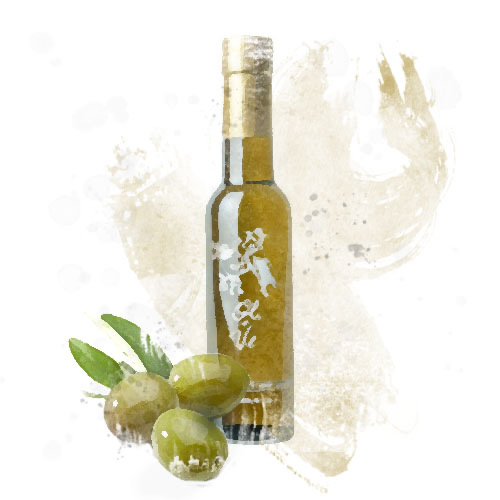What is Olive Oil? Am I consuming the real thing?
One question we get over and over, “Is your oil first pressed, cold pressed?” This is an antiquated term and used more for marketing purposes, not a required standard. Read on to see if you are consuming what you think you are paying for…
Olive oil is the “fruit juice” produced by the crushing of the olive fruit. After olives are picked and washed they are sometimes crushed between stones but, with increased high tech., more often in a malaxer using steel blades. The resulting paste is stirred to release the oil droplets in a process called maceration then spun in a centrifuge to separate oil from water.

You might be interested to know that Spain is the largest producer of olive oil; Italy, the largest exporters; Greece, the largest consumers per capita followed by Spain, Italy and Tunisia. Consumption in South Asia, North America and northern Europe is far less, but rising steadily because of its many proven health benefits and its culinary applications.
Grades of Olive Oil
Rows and rows of olive oil to choose from, but which one to choose? It does make a difference and with the uncovered and known fraud in the industry it is important you know what you are getting.
VIRGIN OLIVE OIL
EXTRA VIRGIN OLIVE OIL: The highest grade, delivering the best taste and the full health benefits of fresh olive oil. It has zero defects. It must pass three requirements and all three in order to be considered Extra Virgin Olive Oil. Because of its high quality and minimal processing, EVOO is high in natural antioxidants, vitamin E and over 20 different healthy phenols from the olive fruit.
- Must be mechanically crushed only with no added heat or chemicals.
- Must be below 0.8% acidity. (Free Fatty Acid speaks to the condition of the fruit at crush time, whether insect damage, bruising to the fruit, too much time between harvest and mill).
- Must be of superior taste with no flaws.
All of our oil at Oli+Ve goes through a chemical analysis as well as a third-party professional tasting panel to ensure that it is Extra Virgin Olive Oil. We provide the results of these two analyses including the variety(ies) of olives in each EVOO as well as the crush date.
VIRGIN OLIVE OIL: Voo is naturally obtained by the same process as EVOO. However, it is a lower quality oil, with a free acidity of no more than 2.0 and/or slight organoleptic defects.
LAMPANTE OLIVE OIL: Is also a naturally obtained oil, however, its quality parameters render it unfit for human consumption without further processing. To be sold as food it must be refined to remove the off flavors. Generally suitable for “technical purposes” such as the textile and cosmetic industries.
Refined olive oil is obtained from refining natural olive oils by methods using chemicals and added heat including deodorization. The low acidity content (no more than 0.3g per 100 grams) is due to the refining processes employed and not the quality of the oil. The refining process also strips the oil of most natural antioxidants.
Olive Oil/ Pure Olive Oil: Is a blend of refined olive oil and natural olive oils (to add flavor) that is fit for human consumption. It has a free acidity of not more than 1.0 grams per 100 and is low in natural antioxidants.
Light or Extra Light Olive Oil: is a misleading term denoting that it is less calories and fat grams. In reality, it is basically the same as Pure olive oil but has been stripped of all color and taste. The term “light” has nothing to do with the quality or health benefits, it has the same 120 calories and 14 grams of fat per tablespoon as all the other oils.
Pomace Olive Oil: Oils extracted from the olive pomace (the solid waste left over from the milling process. It includes olive pits, pulp, seeds and stems.) The oil is obtained through the combined use of chemical solvents (like hexane) and extreme heat to obtain the remaining 5 to 8 percent of oil that is left in the waste.
Enemies of Olive Oil
When olive oil is stored properly and used up within the recommended time, then you will be consuming a healthy and tasty product.
Heat
Store your olive oil away from a heat source. Don’t keep on your stove, right next to your stove, or in the cabinet above your stove. A cool, dark place, like a pantry is ideal but if you use it like I do (daily and often) then a place on your kitchen counter-top away from the stove is fine.
Light
Don’t put in a window and Do store in a dark colored glass bottle, opaque cruet or food safe metal container to minimize exposure to light.
Air
When an oil oxidizes then it becomes rancid. Keeping the air out of your bottle, cruet, container, will help to slow down that process. Make sure if you are using a cork in a bottle to re-insert and push all the way down; if using a pour spout, make sure that it has a flap that closes; if in a container with a screw top, make sure it is secure.
Age
Age is NOT good for olive oil. Olive oil is a fresh fruit juice and “fresh” is key to the taste and health benefits. Crush date is an important piece of information to know and we recommend that you consume all of our EVOO within 14 months of the crush date for the healthiest and best tasting oil. A “Best by Date” doesn’t indicate freshness; you can only determine this by the crush date.
If you are worried about not consuming your oil quick enough I would suggest purchasing smaller bottles and replenishing when empty. If you like the large bottles better but don’t use as often then keep a cork in it and use it to fill a smaller bottle that will be used on a regular basis. You can also use a tapi pourer in your larger bottle, which is air tight.
We follow the hemispheres and their crush seasons, which are counter to each other. (SH crushes between April and June; NH crushes between September and November) What this means is we flip the oils from one hemisphere to the other every 6-7 months (even though the EVOO that is being moved out has another 6 months of shelf life) By doing this, we stock the freshest EVOO available!
EVOO is a healthy fat and we recommend that you don’t add it to your diet, but replace your existing fats used in cooking, baking, and general food use with a fresh EVOO!
